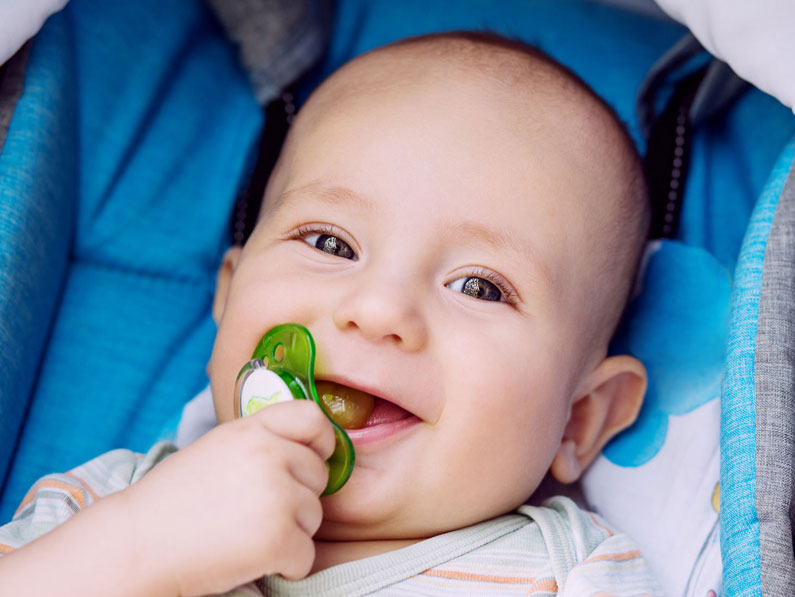
When feeding, rocking, snuggling and singing just aren’t soothing your little one, a pacifier can be an easy and convenient way to provide comfort and security. But whether or not to use a pacifier is an agonizing decision for many parents of toddlers and infants because so much conflicting information about this topic exists.
As a pediatric dental resident, I was taught that using a pacifier could negatively impact the growth and development of a child’s jaws and teeth. In fact, at that time, pacifier use after age two was considered taboo. Years later, however, the idea that using a pacifier could improve oral development began circulating and companies started marketing “orthodontic pacifiers.”
Today, many parents—unsure of what to believe and hoping to avoid problems—choose a path somewhere between no use and unrestricted use, limiting the pacifier to just bedtimes.
I’ve developed my own conclusions about pacifier use based on available research and almost 30 years of experience as a pediatric dentist.
In the early 90s, while stationed in Germany as a United States Air Force pediatric dentist, I often saw children using a pacifier long after the age of two. Even six and seven year olds happily continued using their pacifiers—and rarely experienced problems!
These observations helped me realize that dental problems actually correlate more with the intensity of a child’s sucking behavior than with the frequency or duration of pacifier use. In other words, if a child’s sucking intensity is minimal, a pacifier can be used 24 hours a day with no damage. Alternatively, if the intensity is great, more than a few hours of use a day can cause considerable damage.
At Dentistry for Children, we encourage parents to closely monitor the frequency and intensity of their child’s pacifier habits and to share this information at their child’s first dental appointment (usually within six months of the first tooth appearance). This awareness and information enable us to make the very best recommendations about adjustments in pacifier use, as we carefully watch the development of your child’s jaws, bone structure and bite.


